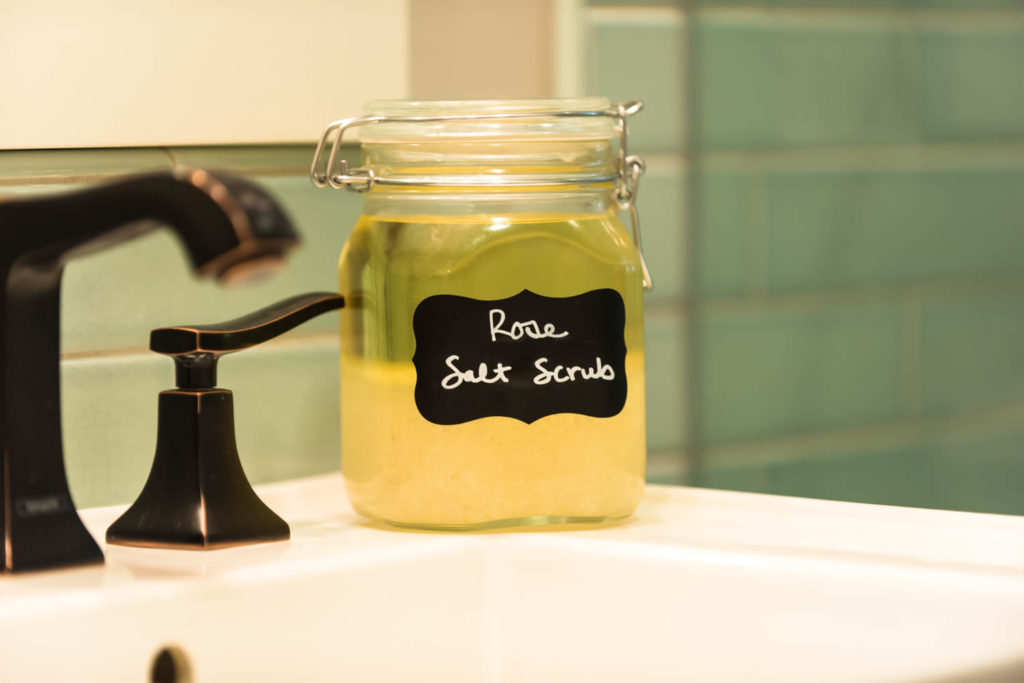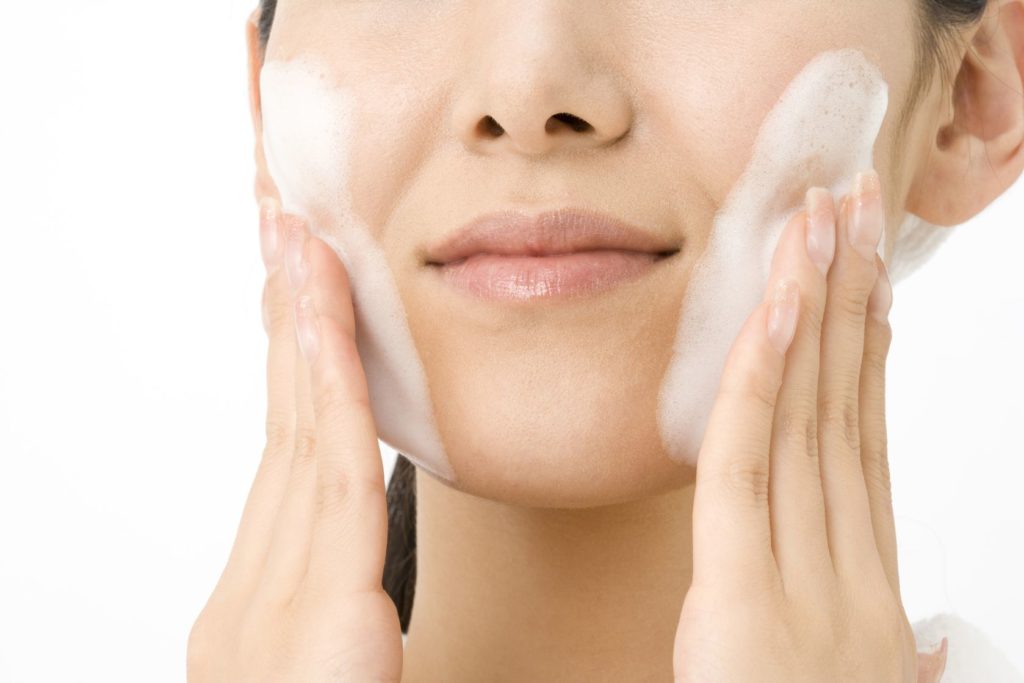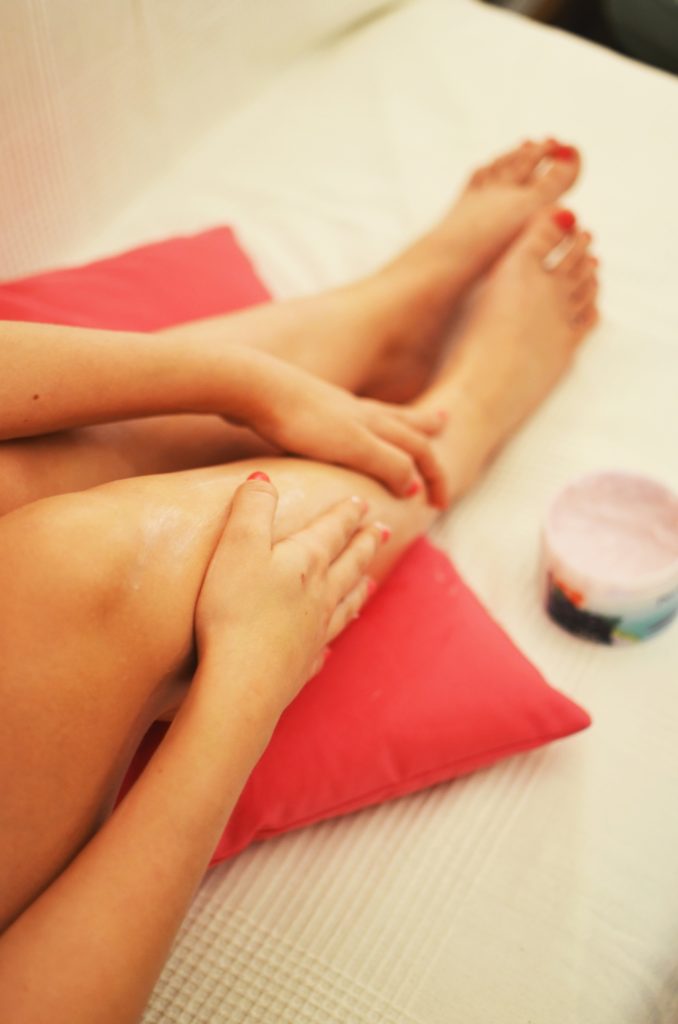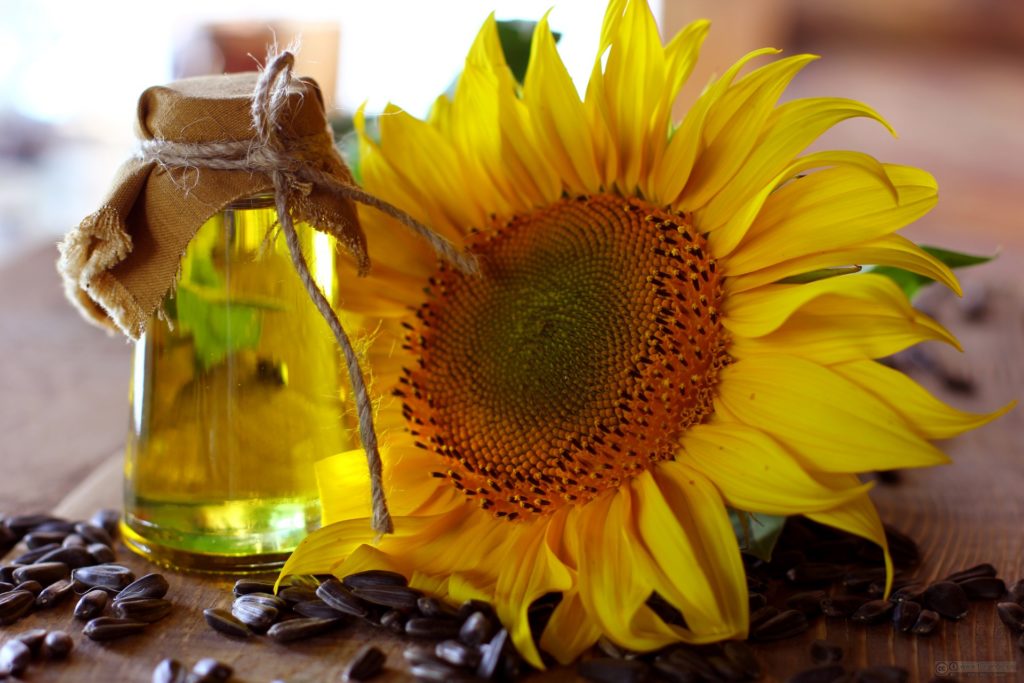I am head over heels for anything SALT.
Salt baths, salt water, salt from the sea or the mountains, salt flats, salt lamps, and yes, salt scrubs.
Salt is incredibly nourishing.
It’s chock full of tons of minerals (also known as electrolytes), as well as trace minerals, or compounds we need in tiny amounts but that are still vital to a properly functioning system.
Salt has been unrightfully demonized, and as a result we’ve missed out on its immense healing benefits for awhile now.
Let’s stop the crazy eschewing of a phenomenal resource we have everywhere and embrace salt!
BEFORE WE DIVE IN
This a long post, so I'm including a table of contents here for you.
You can skip ahead, or just know you can easily jump to the section you'd like to read more about.
I do, of course, recommend reading the whole post, as it's chock full of awesome information!
Table of Contents
- Salt Scrub Benefits
- How To Choose Ingredients (including quality, types, and where to buy)
- Salt Scrub Recipe
- How To Use Your Salt Scrub
So, what the heck is a salt scrub?
I’m glad you asked.
A salt scrub is a gentle, invigorating skin treatment that exfoliates as well as nourishes.
It’s super easy to make, and it leaves your skin soft and glowing.
When I say super easy, I really mean super easy.
It’s all of 3 ingredients: salt, a carrier oil, and a bit of essential oil.
Mix ‘em together and viola!
Salt scrubs are usually pricey items in department stores or salons, so you’ll be saving yourself a nice amount of money by making your own. Bonus!
And you'll be avoiding all the weird chemical stabilizers, preservatives, synthetic fragrances, and dyes that are standard in most beauty products. Double bonus!
So your own scrub will not only be cheaper, but also more effective! You’re not layering on extra crap that your skin and body have to process (if they can) and detoxify. Dare I say triple bonus??
You’re giving your skin pure, raw ingredients that it can use to heal and flourish. Bo...no, just kidding.
Why is rubbing salt and oil on my skin so great?
Shall I count the ways for you?
I shall!
1) It feels amazing
If you’ve never done a salt scrub before, get ready to feel like royalty.
It’s super luxurious rubbing the scrub into your skin and inhaling whatever lovely essential oil you added to the mix.
Afterward your skin feels divinely soft, smooth, and hydrated.
This will fast become a weekly ritual that you look forward to.
2) It remineralizes your skin
High quality, unrefined salt is chock full of minerals. These little beauties heal and nourish the skin.
Usually whatever minerals your body receives comes through food. We have to break them all down, process them, then distribute them.
Unfortunately, most of us are very mineral deficient, meaning whatever we absorb through digestion is gobbled up quickly by our internal organs and rarely makes it all the way out to the skin.
This lack of minerals is compounded if we have a diet poor in minerals (aka lots of processed foods) or if we have compromised digestion, like heartburn, gallbladder dysfunction, food allergies, or irritable or inflammatory bowel disease.
Minerals are food for your skin. They are excellent at reversing conditions like eczema and psoriasis when used in proper amounts, as well as many other skin issues.
3) It hydrates your skin
A salt scrub will reduce dry skin. A high quality oil not only adds moisture to the skin, it also locks it in.
The oil that is absorbed into your skin acts as a protective barrier against fluid loss.
Your skin is part of respiration, or breathing, as crazy as that sounds!
Did you know that the second largest fluid loss every day (about 28%) comes from passive loss through the lungs and skin?
This is a normal physiological process, but some environmental factors can exacerbate moisture loss through these organs.
And if we live in a dry climate, at higher altitude, or are around forced air heating all day, the loss is even greater.
Salt scrubs can be a particularly lovely winter ritual or whenever the heating kicks in order to prevent dry, cracking skin and dehydration.
Of course, drinking more water is always helpful, too!
4) It helps you detoxify
From a physiological perspective, the skin is not only our largest organ, but it is also our largest organ of detoxification.
How do we detoxify through the skin? We SWEAT.
Sweating is the safest way to detoxify, as it allows our metabolic and environmental waste products to avoid traveling through the liver and kidneys.
The more resources we give our skin, the better it can do its job. This includes keeping it hydrated and well mineralized so it can function optimally.
And the more chemical free you keep your skin products, the greater the detoxification power of the skin.
Instead of having to divide energy and clean up newly added synthetic chemicals, it can focus on getting rid of accumulated junk.
5) It cleans your skin
Cleaning is different from enhancing detoxification the physiological process of detoxification, or removing internal waste products.
Here I’m just talking about loosening and removing impurities from the surface of the skin.
The oil, while it hydrates, also helps to loosen and remove gunk that’s built up. Like soap, but better in that it doesn’t strip your skin of its natural protective oils.
Hold on a minute. Are you saying that I should wash my skin with oil?
Yes.
Oil cleansing has become an increasingly popular way to wash your face and body recently, though it’s been a technique used for hundreds or thousands of years in Greece, Egypt, and throughout Asia, to name a few places.
Your skin produces a natural layer of oil (sebum) as a protectant. Soap strips this protective coat, causing the skin to react and overproduce oil. Not exactly what we’re going for for health, balanced skin.
Copyright: paylessimages / 123RF Stock Photo
To me, it’s totally crazy that modern skincare is based around stripping off natural protection, then adding back hydration through synthetic chemicals in moisturizers and balms.
Why not just work with what you’ve got? Your body does know best.
Oil cleansing can lift dirt and grime while hydrating the skin and helping to balance its natural oil content.
Check out this video for a demonstration on how to oil cleanse your face.
6) It softens your skin
While the hydrating properties of the oil help to soften your skin, the salt really shines here.
Because of it’s course texture, the salt is a mild exfoliant, so it will help to remove any excess dead skin that’s built up.
You can choose the grain size of your high mineral salt when you buy it. The finer the salt grains the milder the exfoliation.
The great thing about using salt as an exfoliant is that it’s not just removing old skin cells. As it breaks down it’s also repleting your skin with minerals.
So you’re getting rid of what you don’t want and feeding your skin nutrients it needs. Win-win!
7) It rebalances your skin flora
Your skin is teemingly with bacteria, which is great!
The trick is to feed the good bacteria so they grow well and give the bad bacteria less to eat so they decrease in number.
This is the same game you play with your digestion. You want lots of good bacteria in your gut so it crowds out and reduces the bad stuff.
The skin is often a mirror for the functioning of the internal digestive world. So while topical treatments can help, the most effective skincare starts inside.
There is a ton of new research being done on the skin microbiome, or the community of bacteria, that live on your skin.
Currently, we understand that improving gut flora with probiotic foods and supplements can also improve the flora on your skin.
We know that reducing inflammation by eliminating irritating foods is beneficial. And that supplementing with anti-inflammatory oils, like fish oil, is beneficial.
Using high quality oils and salt in your salt scrub can act in a similar way, in that they are anti-inflammatory and nourishing.
This is something that hasn’t been proven yet in research, but it’s a small logical leap to imagine that anti-inflammatory or soothing products on your skin would help good bacteria thrive, just like in your GI.
Ok, so you’re ready to make your very own super fabulous salt scrub.
How do you choose your ingredients?
This recipe includes:
- carrier oil (more on that below)
- essential oil
- salt
In order to make this lovely blend of soothing goodness, you need to select high quality ingredients.
It is CRUCIAL that you use organic products.
Are they more expensive? Yes.
But making your own salt scrub will be way less expensive than buying it from a department store beauty brand.
Even if your calculate the cost of your scrub with organic ingredients and it ends up being the same cost as a store bought product, you’ve still made a higher quality product for the same price.
Your skin absorbs at least 40% of what’s put on it.
This is great news for when you use high quality ingredients; all that good stuff gets into the skin and the rest of the body and is put to good use.
It’s bad news with low quality ingredients. Instead of revitalizing the skin, they layer on more for it to detoxify and breakdown.
You essentially increase the burden on your skin, making it harder for it to recover and thrive.
How do I find the right products?
Great question. Let’s break it down by ingredient for this recipe.
Carrier Oils
A carrier oil is the oil base for your recipe. It can consist of one or several oils, depending on your desired effect.
Let’s dive into how to purchase good oils, then we’ll get into the types of oils you can use.
Quality of Carrier Oils
Especially when we’re talking about oils, quality matters immensely.
Many of the ways oils are processed for beauty products or general cooking are detrimental to the people who buy them. The oils are altered to produce greater shelf life — something that only benefits the company selling the oil, not you, the consumer.
You are looking for organic, raw, cold-pressed, unrefined oils, or as close as you can get.
Organic = no pesticides or GMOs
Cold-pressed = pressed through a machine at no more than 120° Fahrenheit
Raw = pressed through a machine at no more than 110° Fahrenheit
Temperature is really important. The lower the temp, the less chance of oxidation or decay of the oil. Cold-pressed or raw guarantees fresh, vital oils.
Unrefined = no further processing has been done to the oil to keep it shelf stable. Unrefined nets you the highest vitamins, minerals, and beneficial fatty acids.
And when applicable, extra virgin. This is usually only found on olive oils and coconut oil. Extra virgin means it is the first press of the product, so the highest nutrient density.
The higher the quality oil, the more effective your product will be!
You want to avoid: expeller-pressed, solvent-extracted, or refined oils. For a more in-depth description of each of these terms as well as specific information on some of the many types of carrier oils, check out this article.
Types of Carrier Oils
There are so many oils to choose from! Where do you start?
Let’s look at your skin type and see what might be the best fit for you:
For dry skin:
Dry and mature skin will benefit from conditioning oils. These tend to be a little heavier, and very nourishing and hydrating.
Examples:
- olive oil
- hemp
- avocado
- almond*
*if you are allergic to nuts, do not use almond oil
For oily skin:
Oily skin benefits most from astringent oils. These oils are lighter, and tend to temporarily shrink pores and tonify loose skin.
Examples:
- hazelnut*
- castor
- borage
- grapeseed
- apricot
- sunflower
*if you are allergic to nuts, do not use hazelnut oil
**Please note that if you have acne, you do not automatically have oily skin. And the amount of oil your skin produces depends on environment, diet, and lifestyle.
For mixed skin:
Mixed skin types can benefit from a mixed blend of oils! Generally, I’d use a conditioning oil and a mild astringent oil (avoid castor oil for facial use as it tends to be very astringent). There are some oils that are considered good for any skin type.
Examples:
- almond
- sunflower
- argan
- jojoba
Here's an extensive list of lots of different carrier oils and their properties, if you want to explore more!
Now let's look at budget.
Of the oils mentioned above, olive oil and avocado oil are the least expensive oils for dry skin.
Sunflower, castor, and apricot oil are the most affordable oils for oily skin.
Where to buy
You can find all the oils mentioned above at Mountain Rose Herbs. They have a fantastic site for all your DIY skincare projects!
Thrive Market is another great resource.
You can also find many of the oils on Amazon, though it’s a bit more of the wild west over there. Make sure you read the description clearly, looking for raw or cold pressed, unrefined organic oils.
Essential Oils
Essential oils are highly concentrated natural oils from the plant that have the characteristic fragrance of the plant.
Because they are so concentrated, they are only safe to use in very small amounts and when diluted in a carrier oil. Do not apply them directly to your skin.
Quality of Essential Oils
You REALLY want to buy organic essential oils.
Essential oils are the most concentrated preparation of a plant you can buy.
Even the most innocuous plant distilled down that far can become irritating and toxic.
So, if the oil is super duper concentrated, you really don’t want to have super duper concentrated amounts of pesticides and herbicides in it as well.
Our skin loves absorbing fats or oils (it’s called being hydrophilic). Potent essential oils can get sucked right in, and you only want good, clean, organic oils being absorbed.
A special note on lavender essential oil: it is particularly important to buy organic lavender essential oil.
Those that are not labeled as organic are often a synthetic lavender that can cause allergic reactions.
You are specifically looking for "lavendula angustifolia" as the botanical name of the plant on the bottle.
Remember, you usually only use a few drops of the oil at a time, so the bottle will last you quite awhile if stored in a cool, dry, dark place.
Types of Essential Oils
There are so many types of essential oils it’s both awesome and overwhelming.
Many people have a few favorite scents they gravitate toward, and that’s fabulous. If a scent speaks to you, go for it!
You certainly don’t have to stick to one scent, either! Get creative! Combine a few and see what you like!
Some classic combinations include:
- rosemary peppermint
- lavender rose
- lemon bergamot
- sandalwood orange
Not sure what you like?
Visit a natural food store or supplement store in your area. They often have essential oils in stock with testers available.
I’ll list a few here by their main function so you can choose what effect you’d like:
Invigorating/uplifting
- peppermint
- rosemary
- lemongrass
- bergamot
- eucalyptus
- grapefruit
Calming/soothing
- lavender
- rose
- jasmine
- ylang ylang
Fortifying
- cedar
- pine
- fir
Clarifying/purifying
- sage
- juniper
- lemon
Uplifting/revitalizing
- sandalwood
- frankincense
- orange
Where to buy
My all time favorite essential oils are made by Floracopeia.
All their products are organic and extremely high quality, and the company is devoted to sustainable harvest and educating their consumers.
They carry a wide variety, including rarer or harder to find oils. They have a wonderful amount of reference material on their site as well!
Mountain Rose Herbs is again a great source, and they even have a list of oils that combine well together. Just look for the organic ones!
Salt
Salt! My favorite part of a salt scrub!
I could talk to you all day about the healing benefits of high mineral salt!
I’ll try to condense my enthusiasm down into a manageable chunk for you.
Salt is incredibly healing and nourishing. It’s antiseptic, and when it’s unrefined, it’s bursting with minerals that we really need to function well.
Quality of Salt
There’s really only one type of salt that’s not great for you, and that’s the refined stuff. Unfortunately, refined salt is the majority of salt on the market in grocery stores.
I’m talking about Morton’s salt. That cute little girl with the umbrella? Yeah, not so cute.
Morton’s, or other refined salt, has been completely stripped of it’s minerals down to sodium and chloride. Then iodine gets added back in, as well as some nasty anti-caking agents.
This is the stuff that will raise your blood pressure and cause water retention.
When we use high mineral salt — salt that’s been mined and crushed, no refining — we don’t see these effects.
High mineral salts feed the body trace nutrients we need that are hard to find elsewhere. We all tend to be mineral deficient, and adding high mineral salt back into your life is my #1 way to start addressing this deficit.
Organic or non-organic salt?
Salt is not often labeled as organic.
Salt is not grown like crops; it’s harvested from the sea or mountains.
That being said, I prefer not to use sea salt in my scrubs or cooking or anywhere, really.
Maybe a few coarse grains sprinkled on top of a meal for a little extra punch.
Sea salt is generally a fairly refined salt (not always, especially if you get them here but many have been refined a bit).
Refined = minerals stripped.
And it is the most likely to have impurities, as we know our oceans and seas are more polluted than ever before.
So, in general, I never use sea salt.
Types of Salt
What types of salt do I use, then?
My favorites are pink himalayan salt (or any himalayan salt, really) and dead sea salt.
Dead sea salt:
Dead sea salt is unique in that it is an isolated sea in an isolated area, so pollution potential is low. It also has a more robust mineral profile than other sea salts.
Dead sea salt has been shown to be an effective treatment for many skin conditions, include psoriasis and eczema.
Himalayan salt:
This salt has the richest mineral profile of any salt, including 84 trace minerals.
This salt is mined from the Himalayan mountains, so there is minimal risk of pollution.
Most often this salt is pink, but I have seen it in black, too!
Other options:
The important questions to ask yourself with salt are:
1) What is its purity? Is there any information available?
2) What is the mineral content like? Each will have a different mineral profile.
Some other fun options include Breton (French grey sea salt) and Sonoma sea salt from California (particularly good at holding on to essential oils).
Where to buy
I buy all of my salts, cooking and bath, from Saltworks.
They are an exceptional company when exceptional products.
Feel free to explore and their catalog and experiment with different salts! They offer free shipping on all their orders.
Now that you’re up to speed on how and where to find quality ingredients, let’s get started!
DIY Salt Scrub
Here's the video I made!
Equipment:
- 4c.measuring cup
- 1c. measuring cup
- 1/4 tsp measuring spoon
- Whisk
- Labels
- Pen or sharpie
- A container* (or multiple) for your finished product
*I prefer wide mouth Bormioli Rocco jars over Ball canning jars for anything with salt.
The salt can corrode the lid of canning jars, whereas the rubber seal of the Bormioli jars is unaffected.
The wide mouth makes it easier to get a good handful of your scrub or mix the salt back into the oil.
1 33.75oz Bormioli Rocco jar will fit this salt scrub perfectly. You could also use 2 of the 19oz jars if you wanted smaller containers or to give them as gifts.
Note: you might want a more durable container than glass, as you’ll most likely be using the salt scrub in the shower. Or, if you have children who will be using it.
I like the glass, but it can be slippery. Especially with water and oil involved, so make sure you set it in a stable place.
Ingredients:
- 3c.* carrier oil(s) of your choice
- 2c. finely ground salt of your choice
- 25 drops or 1/4tsp. essential oil(s) of your choice
*Note: I prefer this ratio of salt to oil. Experiment! Try 2 cups of oil or 4 cups of oil. Find the salt to oil ratio you like the best!
Instructions:
- Pour carrier oil, salt, and essential oil into the large 4c. measuring cup.
- Whisk together until essential oil is evenly distributed.
- Pour salt scrub into container(s), trying to get an even distribution of salt and oil into each container.
- Label the containers with the name of your product and the date.
Storage:
- Place in a cool, dry, dark place until you are ready to use your scrub. You want to keep the oils stable for as long as possible.
- The salt scrub should keep for a year or more. You can open it to smell it and make sure the oils are still fresh.
How to use your salt scrub
You’ve made the scrub, hooray! Wasn’t that easy?
It’s just as easy to use!
Instructions:
- Dampen your entire body. This is most easily done in the shower. If you have longer hair, you will want to tie it up so it doesn’t get coated in oil.
- Pour some of the salt scrub into your hands or onto a loofah mitt and begin at your feet, working upward in circular motions.
- You want to use gentle pressure to lightly exfoliate your skin, but a more rapid circular motion to stimulate the circulatory system.
- Avoid any scratches or wounds.
- When you’ve massaged your whole body, rinse with warm water and dry off with a towel.
- Salt scrubs can be done about once a week.
Dr. Liz Tip #1
Place an old towel in your shower when you’re using the salt scrub. This way, much of the oil you rinse off will collect on the towel, rather than the floor of your bathtub, which makes it very easy to slip.
If your tub does become slippery, make sure to scrub out the oil with a natural citrus cleanser or Bon Ami before the next use.
Dr. Liz Tip #2
These scrubs make awesome, heartfelt gifts. Who doesn't love to receive a handmade present? Birthdays, mother's day, bridal showers, you've got it covered!
I hope you enjoy this wonderfully soothing, luxurious treatment! Let me know how it goes!










